Or, the one in which I totally gross out my American readers.
The taste of a British Christmas were established hundreds of years ago when the Crusaders first brought spices and exotic fruits back to Britain and it was discovered that they were delicious preservatives of meat. While the cooking of the rest of Western Europe is based on the use of herbs, British food relies much more on spices for flavour, and the British Empire grew up in part because of the spice trade. All manner of dried fruits, citrus fruits, strange spices, brandy and rum would be brought back to Blighty and our traditional Christmas foods all feature these erstwhile exotic ingredients. Christmas cake, Christmas puddings and mincemeat are essentially all variations on the dried fruit, citrus, spices and alcohol theme, just different in texture.
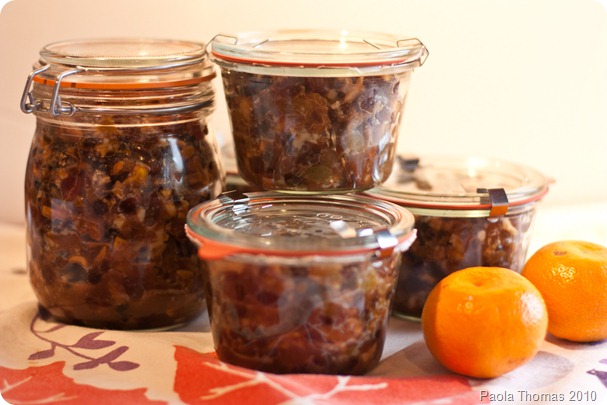
Mincemeat got its name, because, yes, in Tudor times, it used to contain meat – preserved by the fruit sugars, alcohol and spices. I love this quote I found here and taken from a 1545 cookbook.
‘To make Pyes – Pyes of mutton or beif must be fyne mynced and ceasoned wyth pepper and salte, and a lyttle saffron to coloure it, suet or marrow a good quantite, a lyttle vyneger, prumes, greate raysins and dates, take the fattest of the broathe of powdred beyfe, and yf you wyll have paest royall, take butter and yolkes of egges and so tempre the flowre to make the paeste’
As the years went past, the quantity of meat diminished and then disappeared, but the beef suet lived on, helping to preserve the mixture and giving an unctuous silky mouth feel to the finished preserve when warmed. In my opinion, it’s not worth making mincemeat with anything else.
Who would have thought that one of the main things I’d miss upon moving to the US would be suet? Suet is the dry fat around around beef kidneys, and, like lard, is very difficult to track down in the US.
For some reason Americans will quite cheerfully chow down on all sorts of dangerous hydrogenated fats but are very circumspect when it comes to pure animals fats, such as suet or lard, even though they have no more saturated fat than butter.
In the UK ‘shredded’ suet is available in boxes, chopped and floured into tiny pellets and looking like it never saw an animal in its life. This is good, as so many classics of traditional British cuisine, including many dessert dishes – steak and kidney pudding, jam roly poly, spotted dick (yep, I saw you laughing at the back), traditional Christmas puddings and mince pies – depend for their flavour and texture on copious amounts of chopped up beef fat. Nobody could ever accuse traditional British food of being sophisticated.
Not only is shredded suet impossible to track down here, but, since the outbreak of mad cow disease in the late 80s in the UK, it, and products containing it, can’t even be imported into the US. Which means that I’ve missed traditional mincemeat and mince pies more than words can express. (Vegetarian suet and vegetarian mincemeat IS available, but it’s full of hydrogenated fats and tastes horrible, so to be avoided at all costs in my book).
However, even a dyed-in-the wool carnivore such as myself was slightly perplexed when I unwrapped my packet of suet from the butcher. Was I seriously going to put this in my dessert?
I also had absolutely no clue how to prepare it – all British recipes are resolutely silent on the issue, just assuming you’re going to use the packet stuff. So I improvised by painstakingly picking the globules of dry white fat from the papery membrane it was stuck too, and discarded both the membrane and the stuff that was more obviously meat rather than fat). I began to realise why a certain Mr Hugon had made a fortune back in 1893 out of creating Atora shredded suet for the harried British housewife.
A quick pulse in the food processor later with a tablespoon of flour and this is what I ended up with. The suet is very dry and so crumbs up nicely. How much more innocuous and palatable this looked!
From then on we were on a roll. I used Delia Smith’s recipe from the venerable-but-still-much-thumbed-in-this-house-anyway Delia Smith’s Christmas.
Ingredients (Makes 6lbs)
1lb/450g Bramley apples, cored and chopped small without peeling (I used the last of my precious Bramleys, but you can use any sharp, crisp apples)
8oz/225g shredded beef suet
12oz/350g raisins
8oz/225g sultanas (golden raisins)
8oz/225g currants
4oz (110g) mixed candied peel, finely chopped (I could only find orange peel and forgot to chop mine)
4oz (110g) glace cherries (Delia’s recipe omits the cherries, which are not traditional, and uses 8oz of mixed peel, but I love cherries in mine)
12oz/350g soft dark brown sugar (you may want to use a little less if your apples are much sweeter than Bramleys)
Grated zest and juice of two oranges
Grated zest and juice of two lemons
2oz slivered almonds
4 tsps ground mixed spice*
1/2 teaspoon ground cinnamon
Grated nutmeg
6 tablespoons brandy
*‘Mixed spice’ is a ready made up spice mixture from the UK similar to pumpkin pie spice but omitting the ginger and often including ground cloves. In the US I replaced all the spices listed here with 2tsps cinnamon, 1 tsp nutmeg, 1 tsp allspice and 1 scant tsp ground cloves.
Method
Spend the best part of an hour weighing and measuring fruits and chopping apples. This is fun as your kitchen will smell like you’ve died and gone to heaven and if your kids are anything like my kid they’ll be keen to help.
Stir all the ingredients, except the brandy, together in a large ceramic bowl. I added the brandy by mistake.
Cover with a cloth and leave overnight in a cool place so that flavours get a chance to mingle.
Then place everything in a very cool (225 degrees F/120 degrees C) oven for three hours. This melts the lard and coats the apples, thereby preventing fermentation.
Look how yummy and moist and succulent and juicy it looks when it’s warmed!
And look how faintly disgusting it looks covered in coagulated fat after being left to cool completely in the fridge.
But no matter, all it needed was another thorough stir to break up the fat and it became unnoticeable in the mixture. The brandy is normally added at this stage to preserve everything. I was a little worried that my mixture would not preserve so well because I’d added the brandy before the warning process, so I added another 6 tbsps of brandy to be sure. That’s my excuse anyway.
Words cannot describe how delectable this tasted. Eons better than any brand of jarred mincemeat I’ve ever tasted. I seriously could have eaten the whole bowlful that very morning. Instead I packed it in clean, dry jars which I heated in the oven to sterilise.
If properly made, mincemeat will keep for at least a year or three. The flavours are supposed to develop and intensify in the jar so it’s customary to make your mincemeat in November for December eating. I honestly don’t see though how the flavour of this could be in the slightest bit improved. Mince pies will be made at the end of the week.
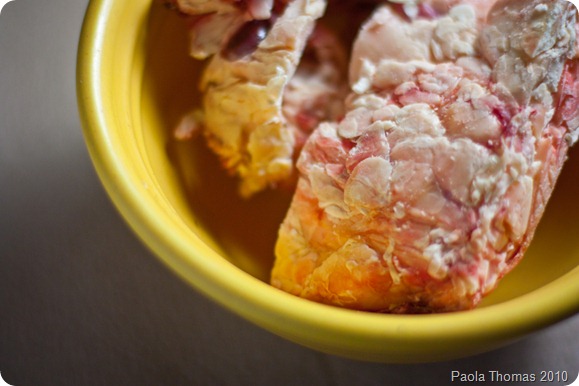
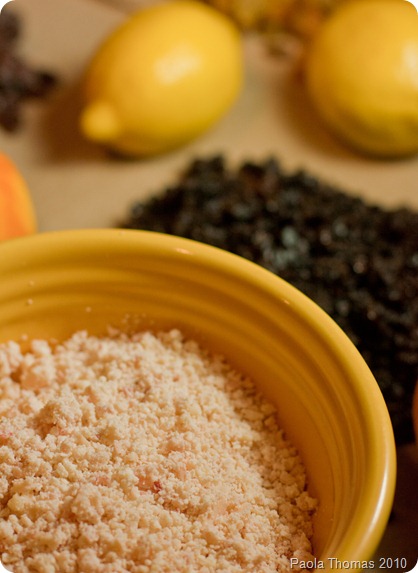
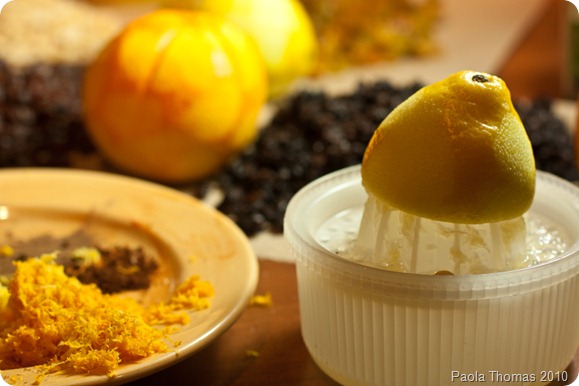
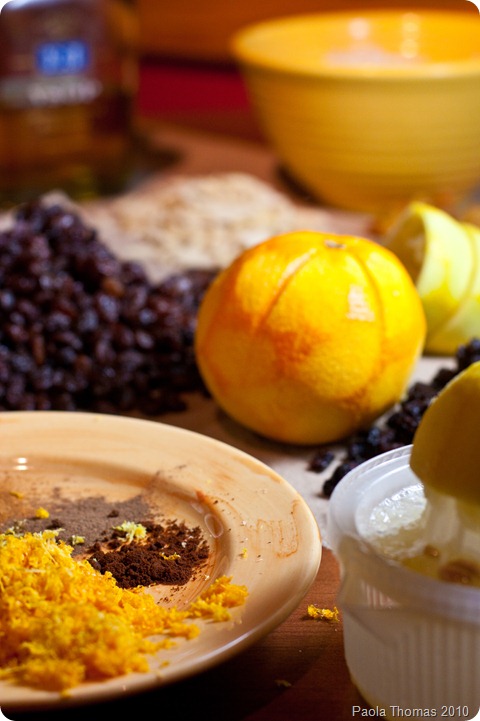
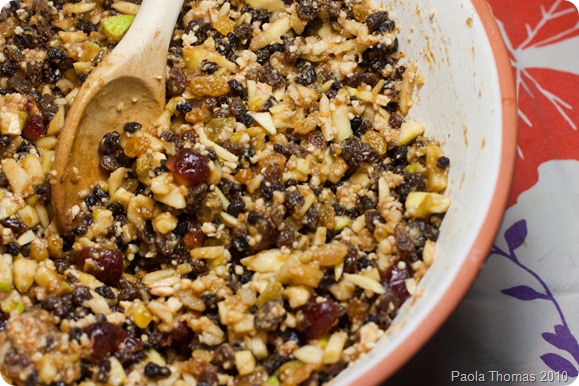





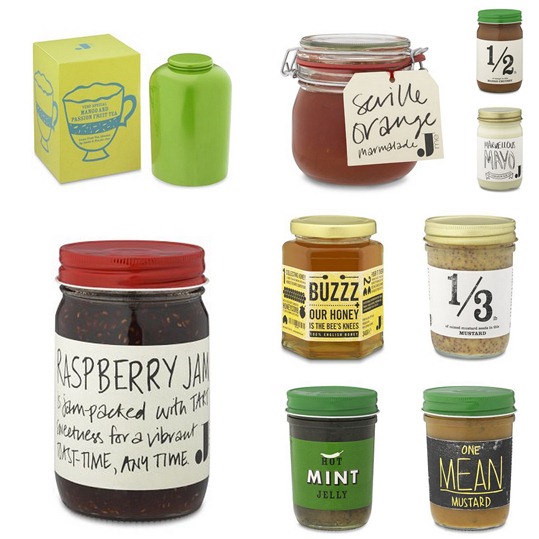

you are a mincemeat inspiration! for the last couple of years i’ve mixed jars of lidl mincemeat with jars from fortnums to make the good stuff go further and the family loved it but i now realise i should have been making it all along and not only that but making the suet too!
This seriously got me wondering why I’d never made it before – it is honestly so good, and that’s before it has a chance to mature, so goodness knows how fabulous it will be in six months or so. I’m never getting the jarred stuff again.
Not sure I’d bother with making the suet though if I had the packet stuff to hand. I don’t think it makes any difference. It’s just that I didn’t have a choice.
I had the same experience with my slab of Suet from a butcher…yuck, my bits went though a meat grinder.so it looked a bit like the packet stuff. I also use Delia for all my Xmas delights. The X mas puds next…Do I need more suet?
This is fabulous! Exactly what I’ve been searching the net for. But why no actual meat? You’ve got the suet, so wouldn’t meat be the next step? I’ve been wanting to make a traditional mincemeat pie. I have an old recipe that calls for meat so I was thinking of using beef stew meat cooked in suet till soft and shredable.
On the suet, I guess I’m fortunate. I have about 20 lbs of frozen grass fed beef fat in my freezer. I’m rendering some now to use for cooking and such. For my recipe I wasn’t sure if the suet called for was already rendered and scoopable or to do it just like you did with the fine chopping. Anyway, thanks for the post!
Despite how you tried to make me buy this as edible, I still think it’s disgusting. 🙂 Mincement and Cumming and “win a mirror!” on a single blog page. Definitely a Paola blog.